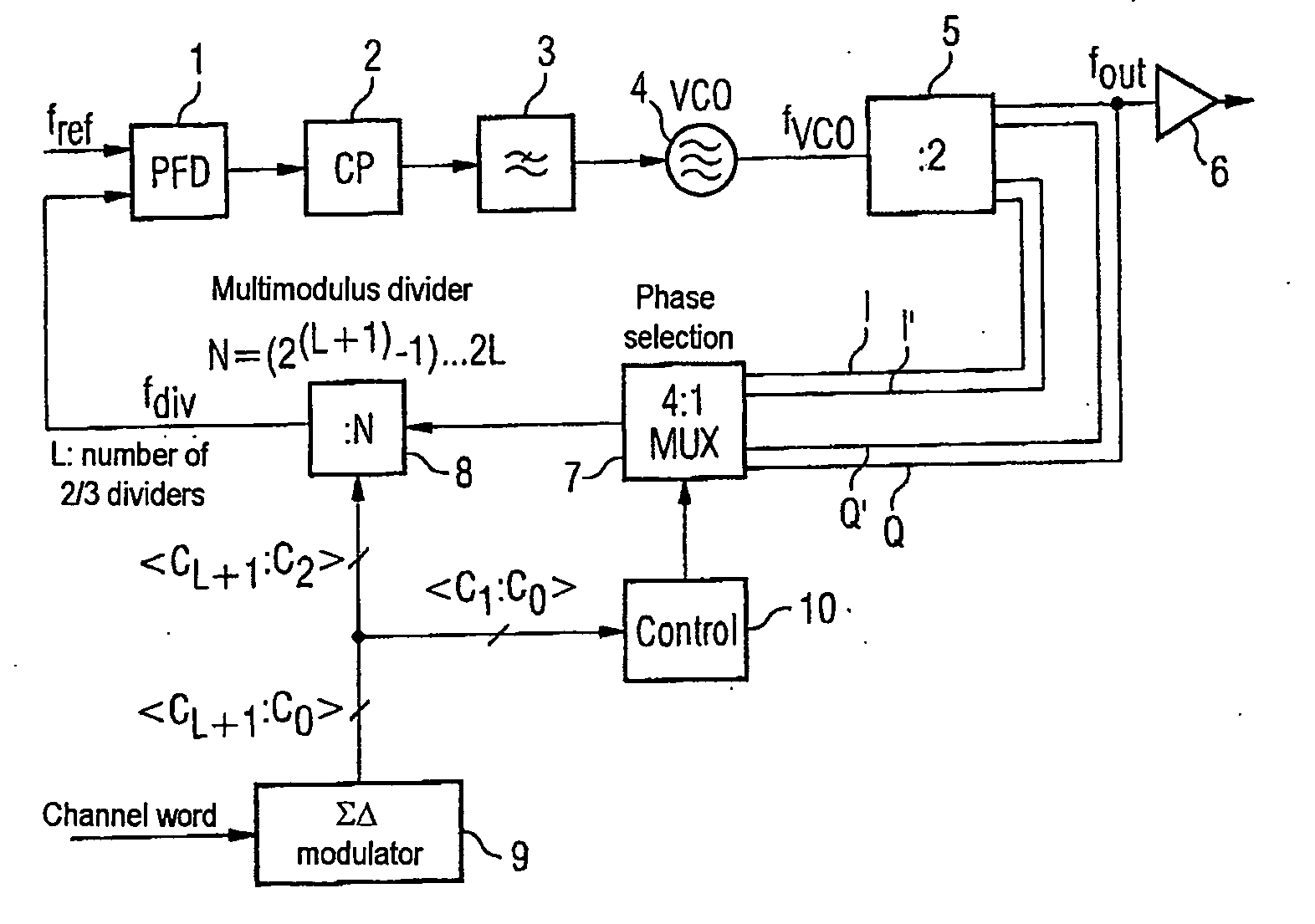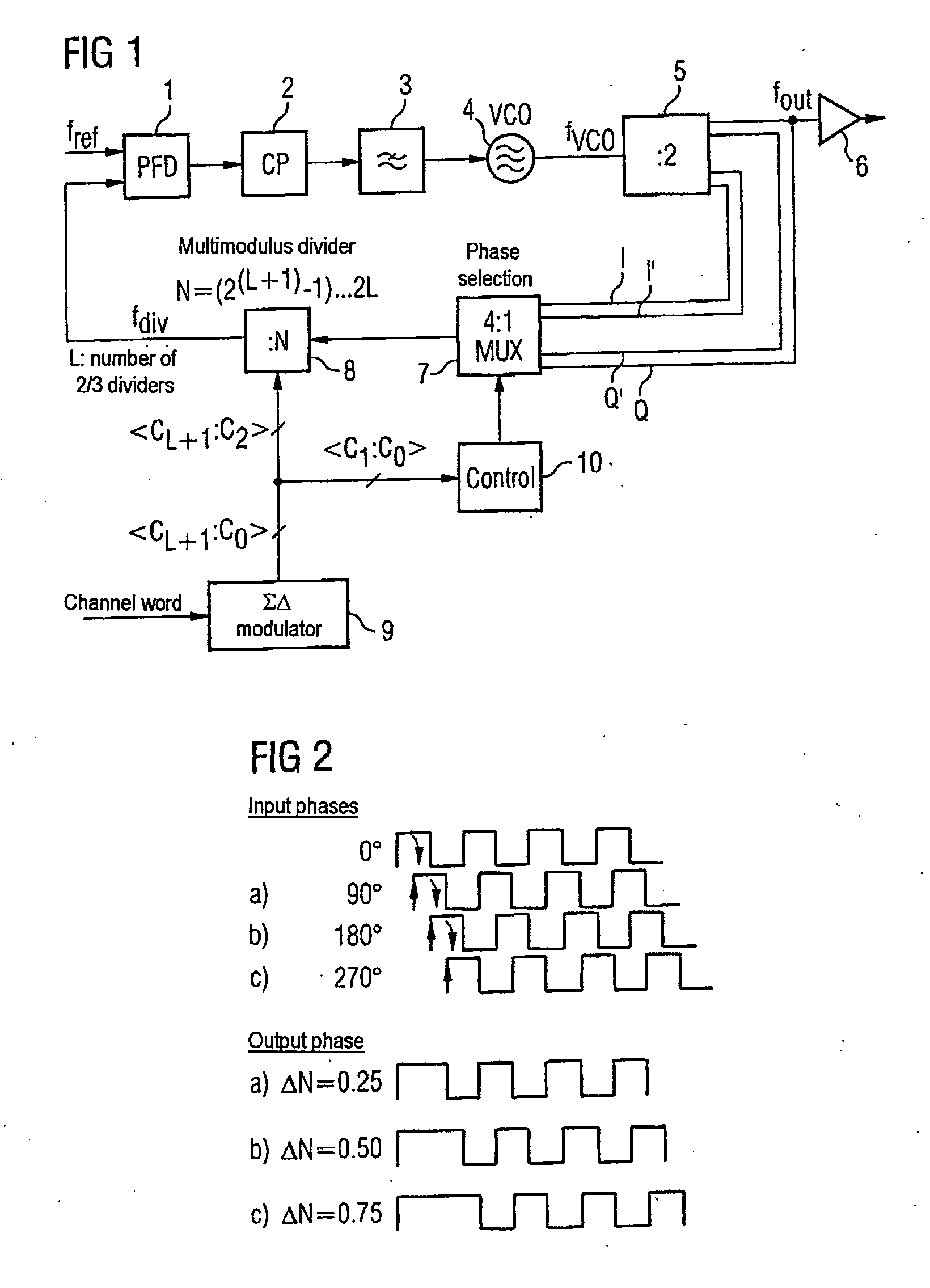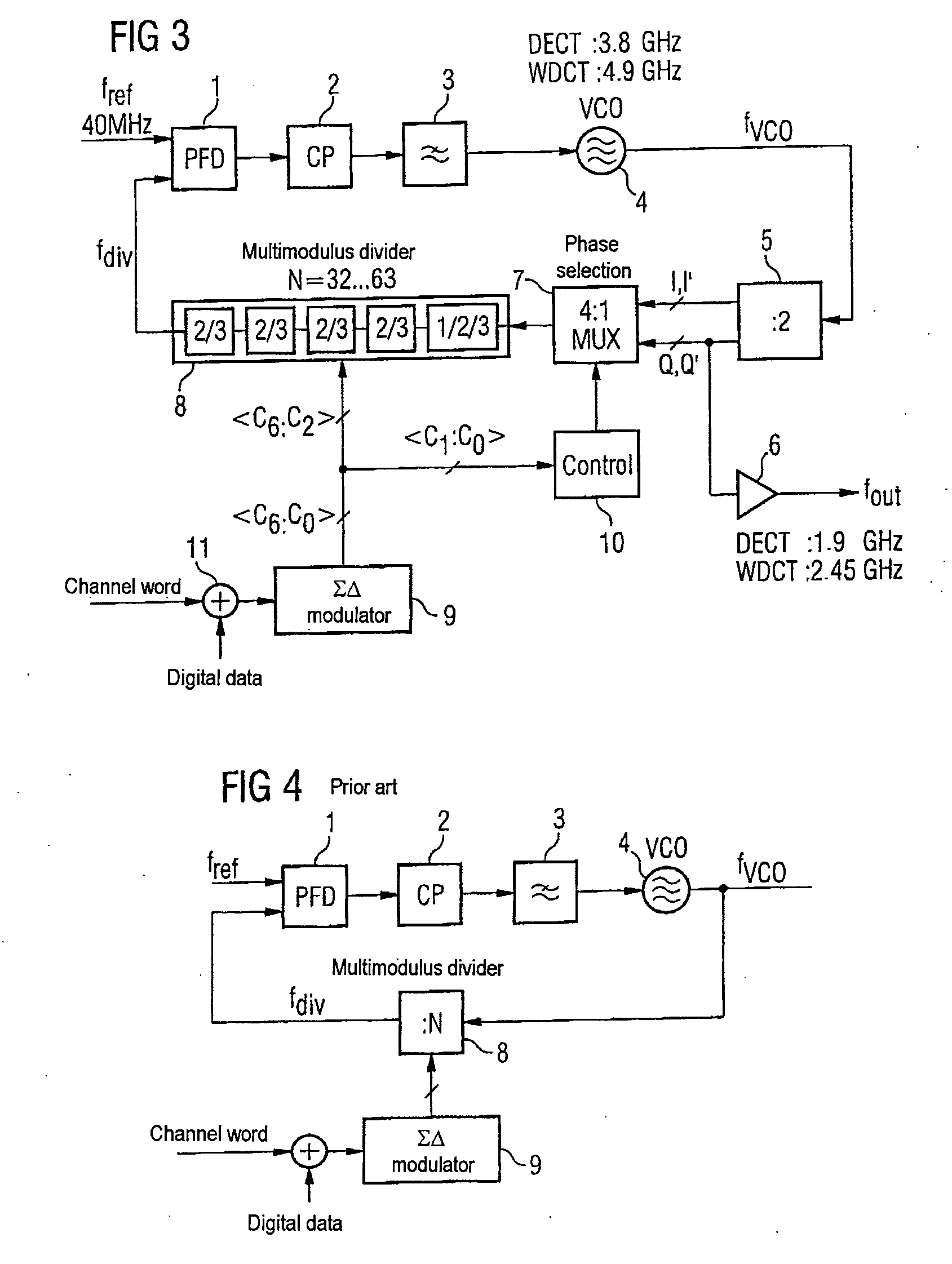Phase locked loop with a modulator
a phase lock and modulator technology, applied in the field of phase lock loop with a modulator, can solve the problems of “frequency or phase interference swing”, difficulties, and large bandwidth requirements of modulated data transmission for modern applications in communication technology, and achieve the effects of reducing the step size of the multimodulus divider, reducing the fm interference swing, and reducing the noise of quantization
- Summary
- Abstract
- Description
- Claims
- Application Information
AI Technical Summary
Benefits of technology
Problems solved by technology
Method used
Image
Examples
Embodiment Construction
[0041]FIG. 1 shows a phase locked loop with a phase comparator 1 having two inputs and an output. One of the two inputs of the phase detector 1 can have a reference frequency generator connected to it which delivers a reference frequency fref (not shown here). The output of the phase detector 1 has a loop filter 3 connected to it via a charge pump circuit 2, said loop filter being in the form of a low-pass filter. The output of the loop filter 3 has the control input of a voltage-controlled oscillator 4 connected to it. The output of the voltage-controlled oscillator 4, at which a signal at an oscillator frequency fvco is provided, is connected to a frequency divider 5. The frequency divider 5 is, in one example, in the form of a master-slave D-type flip-flop with feedback and has four outputs. The four outputs of the frequency divider 2, which brings about frequency halving, are all designed for tapping off the output frequency fout, which corresponds to half the oscillator frequen...
PUM
 Login to View More
Login to View More Abstract
Description
Claims
Application Information
 Login to View More
Login to View More - R&D
- Intellectual Property
- Life Sciences
- Materials
- Tech Scout
- Unparalleled Data Quality
- Higher Quality Content
- 60% Fewer Hallucinations
Browse by: Latest US Patents, China's latest patents, Technical Efficacy Thesaurus, Application Domain, Technology Topic, Popular Technical Reports.
© 2025 PatSnap. All rights reserved.Legal|Privacy policy|Modern Slavery Act Transparency Statement|Sitemap|About US| Contact US: help@patsnap.com



